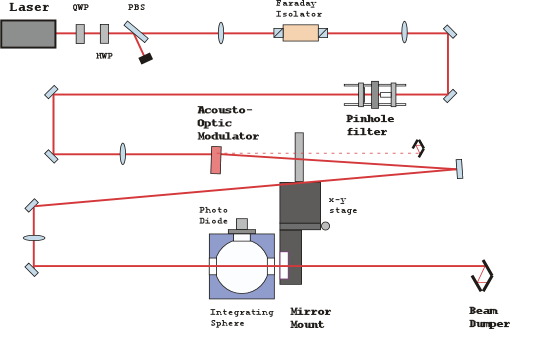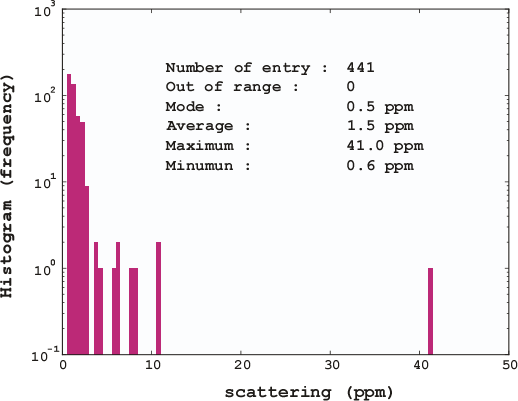*** Keyword *** Gravitational wave, General relativity, Laser interferometer, and Precise measurements
NAOJ / GW Project Office
Mirror developments
Overview
At long last construction of the next generation gravitational wave (GW) detector KAGRA has begun. Because the detector consists of a 100 Watt class high power laser and complex optical cavities, high quality mirrors are key items to obtain its designed performance. Not only optical properties but also mechanical one need to be high quality. Therefore, the mirror developments for KAGRA detector are very complex and difficult.
Quality inspection
Our group is in charge of the ultra low loss and high reflectivity mirror developments and of the high damage threshold mirror for the high power laser. The research is collaborated with the University of Tokyo, the University of electro-communications, and several Japanese optics companies. Storing large number of photons in an optical cavity is effective to improve the sensitivity of not only GW detectors but also of general precise measurements using laser interferometers. To realize this situation, the cavity should have high finesse which corresponds to a number of bounces of photons in the cavity. High reflection mirrors are necessary for this reason. If we need very high reflectivity of more than 99.99\%, its optical loss becomes important. In general easy-obtainable mirrors have a untolerable loss of 100ppm level. Because no transmitted light is available, such cavity cannot be used for precise measurements. Therefore, it is our immediate target to develop mirrors which are compatible with high reflectivity of more than 99.99\% and low loss of less than 10ppm. At the time TAMA detector was constructed, it was succeeded to achieve ultra low loss of 1.5ppm [1]. Unfortunately the optics company which was collaborated with our group withdrew. Now we collaborate with several companies to recover the mirror quality. Final target is to break our world lowest loss record.
As the first step, a scatter meter was constructed in TAMA experimental hall which has been used for the GW observation experiments. Figure 1 shows an experimental setup on a table. To obtain extremely good sensitivity, the following efforts are undertaken:
- a pinhole filter is applied to obtain ideal Gaussian beam profile,
- the lock-in detection method is applied to obtain good signal-to-noise ratio for the scattering light power measurement,
- an acousto-optical modulator is applied to reduce the scattering noises at the modulator such as the mechanical chopper, and
- a low-scattering beam dumper for the transmitted light of the objective mirror is developed.

Figure 1: An experimental setup for the scatter mater
Figure 2 shows a histogram of two dimensional scan results for a fused silica plate which is polished with a micro-roughness of less than
0.75  . An averaged scattering of 1.5ppm was obtained. Theoretically the relationship between micro-roughness and scattering is represented by Eq. (1).
. An averaged scattering of 1.5ppm was obtained. Theoretically the relationship between micro-roughness and scattering is represented by Eq. (1).
 --- (1)
--- (1)
Here  is the wavelength of the laser and
is the wavelength of the laser and  is micro-roughness. In our case, the wavelength is at 1064 nm and micro-roughness is 0.75
is micro-roughness. In our case, the wavelength is at 1064 nm and micro-roughness is 0.75  , and hence the scattering (Total Integrated Scatter) is expected to be 1ppm. This value is consistent with our measured one [2].
, and hence the scattering (Total Integrated Scatter) is expected to be 1ppm. This value is consistent with our measured one [2].
By using this system, a lot of trial mirrors are being evaluated to obtain high reflectivity and low loss mirrors.

Figure 2: A histogram for a fused silica plate. An averaged scattering of 1.5ppm was obtained.
[1] Ueda, A., et al.: 1996, OPTICAL REVIEW, 3, 369.
[2] Tatsumi, D., 2012 spring, Japan Astronomical Society meeting, V249a.
Substrates
Polishing
Coating
Designed by CSS.Design Sample